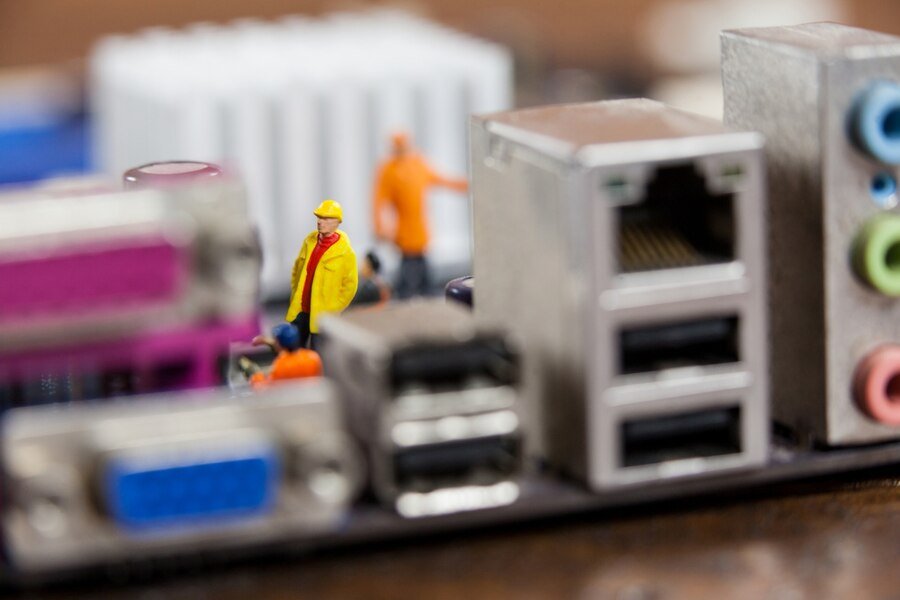Tech
Unlocking the Potential: A Comprehensive Guide to DisplayPort Cables
DisplayPort cables are essential components in modern computing and entertainment systems,

DisplayPort cables are essential components in modern computing and entertainment systems, facilitating the transmission of audio and video signals between devices. With advancements in display technology, DisplayPort has become a popular choice due to its high performance and versatility.
History of DisplayPort
The DisplayPort interface was developed by the Video Electronics Standards Association (VESA) to address the limitations of existing display interfaces. It was first introduced in 2006 as a successor to VGA and DVI connections, offering improved bandwidth and support for higher resolutions.
Standard DisplayPort Cable
Standard DisplayPort cables are the most common type, featuring a rectangular connector with 20 pins. They support high-definition video and audio signals, making them suitable for a wide range of devices, including monitors, computers, and gaming consoles.
Mini DisplayPort Cable
Mini DisplayPort cables are smaller in size and feature a 20-pin connector. They are commonly used in laptops, tablets, and other portable devices to connect to external displays or projectors.
DisplayPort to HDMI Cable
DisplayPort to HDMI cables allow users to connect DisplayPort-enabled devices to HDMI-compatible displays. This versatility makes them useful for connecting modern laptops or PCs to older monitors or TVs.
Benefits of DisplayPort Cables
DisplayPort cables offer several advantages over traditional interfaces, including support for higher resolutions, faster refresh rates, and improved color depth. They also support advanced features like multi-stream transport (MST) and high dynamic range (HDR), enhancing the overall viewing experience.
How DisplayPort Cables Work
DisplayPort cables utilize packetized data transmission to send audio and video signals between devices. This allows for efficient data transfer and synchronization, resulting in smooth and reliable performance.
DisplayPort Cable vs. HDMI Cable
While both DisplayPort and HDMI cables are widely used for connecting devices to displays, they have some differences in terms of performance and compatibility. DisplayPort cables typically offer higher bandwidth and support for advanced features like variable refresh rate (VRR), making them preferred for gaming and multimedia applications.
Choosing the Right DisplayPort Cable
When selecting a DisplayPort cable, it’s essential to consider factors such as cable length, version compatibility, and intended usage. Choosing the right cable ensures optimal performance and compatibility with your devices.
Setting Up DisplayPort Cables
Setting up DisplayPort cables is straightforward, requiring users to simply connect the cable between their devices and displays. Most modern devices automatically detect and configure the connection, making the setup process quick and hassle-free.
Common Issues with DisplayPort Cables
Despite their numerous benefits, DisplayPort cables can sometimes encounter issues such as signal loss, flickering, or compatibility issues. These issues can often be resolved by ensuring proper cable connections, updating device drivers, or adjusting display settings.
Tips for Maintaining DisplayPort Cables
To ensure optimal performance and longevity, it’s essential to properly maintain DisplayPort cables. This includes avoiding cable strain, keeping connectors clean, and storing cables properly when not in use.
Future of DisplayPort Technology

As display technology continues to evolve, DisplayPort is expected to remain a key player in the industry. Future advancements may include higher bandwidth support, improved power delivery capabilities, and enhanced compatibility with emerging display standards.
Conclusion
DisplayPort cables are essential components for connecting modern devices to displays, offering high performance and versatility. Understanding the different types of DisplayPort cables, their benefits, and how to properly set up and maintain them can help users optimize their viewing experience.
FAQs
Are DisplayPort cables backward compatible?
DisplayPort cables are generally backward compatible, allowing users to connect newer devices to older displays or vice versa. However, compatibility may vary depending on the specific devices and cable versions involved.
Can I use a DisplayPort to HDMI adapter?
Yes, DisplayPort to HDMI adapters are widely available and allow users to connect DisplayPort-enabled devices to HDMI-compatible displays. This is useful for connecting modern laptops or PCs to older monitors or TVs.
Do DisplayPort cables support audio transmission?
Yes, DisplayPort cables support audio transmission in addition to video signals. This allows users to connect devices such as computers or gaming consoles to displays with built-in speakers or audio systems.
What is the maximum resolution supported by DisplayPort cables?
DisplayPort cables support a wide range of resolutions, including 4K, 5K, and even 8K. The maximum resolution supported depends on factors such as cable version, device compatibility, and display capabilities.
Are DisplayPort cables better than HDMI cables for gaming?
DisplayPort cables are often preferred for gaming due to their higher bandwidth and support for advanced features like variable refresh rate (VRR). However, HDMI cables are still widely used and offer sufficient performance for most gaming scenarios.
Table of Contents
-

 Tech1 year ago
Tech1 year agoHow to Use a Temporary Number for WhatsApp
-

 Business2 years ago
Business2 years agoSepatuindonesia.com | Best Online Store in Indonesia
-

 Social Media1 year ago
Social Media1 year agoThe Best Methods to Download TikTok Videos Using SnapTik
-

 Technology1 year ago
Technology1 year agoTop High Paying Affiliate Programs
-

 Tech10 months ago
Tech10 months agoUnderstanding thejavasea.me Leaks Aio-TLP: A Comprehensive Guide
-

 FOOD12 months ago
FOOD12 months agoHow to Identify Pure Desi Ghee? Ultimate Guidelines for Purchasing Authentic Ghee Online
-

 Instagram3 years ago
Instagram3 years agoFree Instagram Auto Follower Without Login
-

 Instagram3 years ago
Instagram3 years agoFree Instagram Follower Without Login




















